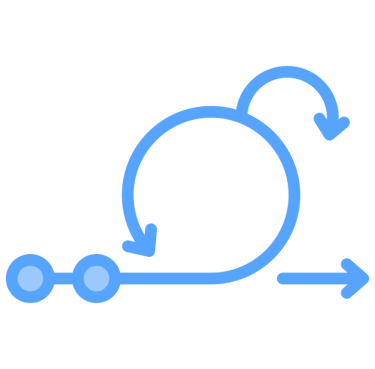Payroll for Service Staff
CASE STUDY NO.4
Make administering hundreds of employees easier
This project centered on designing a payroll automation platform tailored for service-based businesses, where managing employee hours, extra tasks, and pay breakdowns can quickly become a logistical challenge.
Prior to this system, time tracking was handled manually or through disconnected tools, which led to frequent errors in shift logging, missed overtime payments, and a lack of clarity around tax deductions, benefits, and bonuses. Employees had limited visibility into their payroll and often needed to rely on management to explain pay discrepancies.
The core objective was to create a self-service system where staff could easily review their clock-in/clock-out records, see additional earnings for extra tasks, and track deductions — all while allowing the admin team to automate payroll processing and reduce human error.
About the project
Results and impact
Testing and validation
Research and design methods
Objectives
After launching the system, the organization reported immediate improvements:
Payroll processing time decreased by 65%, thanks to automation of time-based calculations and bonus pay logic.
Employee trust increased, with over 90% of users reporting better understanding of how their pay was calculated.
Missed clock-ins dropped by 40%, due to real-time shift reminders and feedback loops.
We conducted scenario-based usability testing with employees and managers. Participants were asked to:
View their current week’s hours and spot any missing shifts
Identify their bonus pay from special tasks completed
Understand a simulated pay stub, including deductions and tax contributions
Simulate reporting a missed clock-in
Feedback from staff led to improvements in the visual hierarchy of the pay breakdown, especially around net pay vs. gross pay and the description of deduction categories. We added color-coded tags to clearly mark overtime hours, missed shifts, and bonuses for special assignments.
We began by conducting user interviews with service staff, managers, and payroll administrators to understand their day-to-day friction points. Staff expressed concerns about not knowing how overtime or bonus payments were calculated, while managers highlighted the administrative burden of manually calculating pay based on paper records or scattered time-tracking apps.
We mapped out the entire lifecycle of a payroll cycle — from staff clock-in to payroll processing — and noted the areas where automation could reduce manual overhead and increase trust.
Allow service staff to track their work hours, overtime, and assigned bonus tasks in real time.
Provide a clear, transparent breakdown of payroll, including taxes, deductions, and healthcare contributions.
Automate payroll calculations based on shift logs, overtime rules, and bonuses.
Notify users of missed clock-ins, schedule changes, or shift confirmations.
Offer managers and HR teams a centralized dashboard to view hours worked, payroll status, and compliance metrics.
From these insights, we created user personas for frontline service employees, shift supervisors, and HR/payroll managers. Each persona had different needs: staff wanted clarity and fairness, while admins needed control and speed.
We then designed wireframes for both employee-facing views and admin dashboards, emphasizing simplicity, clarity, and trustworthiness. Early wireframes focused on the time log, overtime alerts, and breakdown views — ensuring that even non-technical staff could understand where every peso/dollar went.
Managers tested the admin dashboard, requesting additional filters by employee, date range, and shift type. We also refined notification logic, ensuring that both parties (staff and admin) were alerted in real-time when corrections or approvals were needed.
Tools & methodologies






To create more complex visual elements
Tested the different functionalities of the prototype
Adobe Illustrator
Implemented along side a multidisciplinary team
Used to make a high fidelity interactive prototype
Scrum
Useberry
Axure RP 10
HR teams saw a significant reduction in disputes and correction requests, freeing them to focus on higher-level tasks.
The dashboard gave management a clear, daily view of hours worked, payroll totals, and compliance with labor regulations.
This system brought transparency and accountability to an area that often causes confusion and mistrust. By giving both employees and managers the tools they need to monitor time, pay, and obligations clearly, the organization created a more efficient and fair workplace.